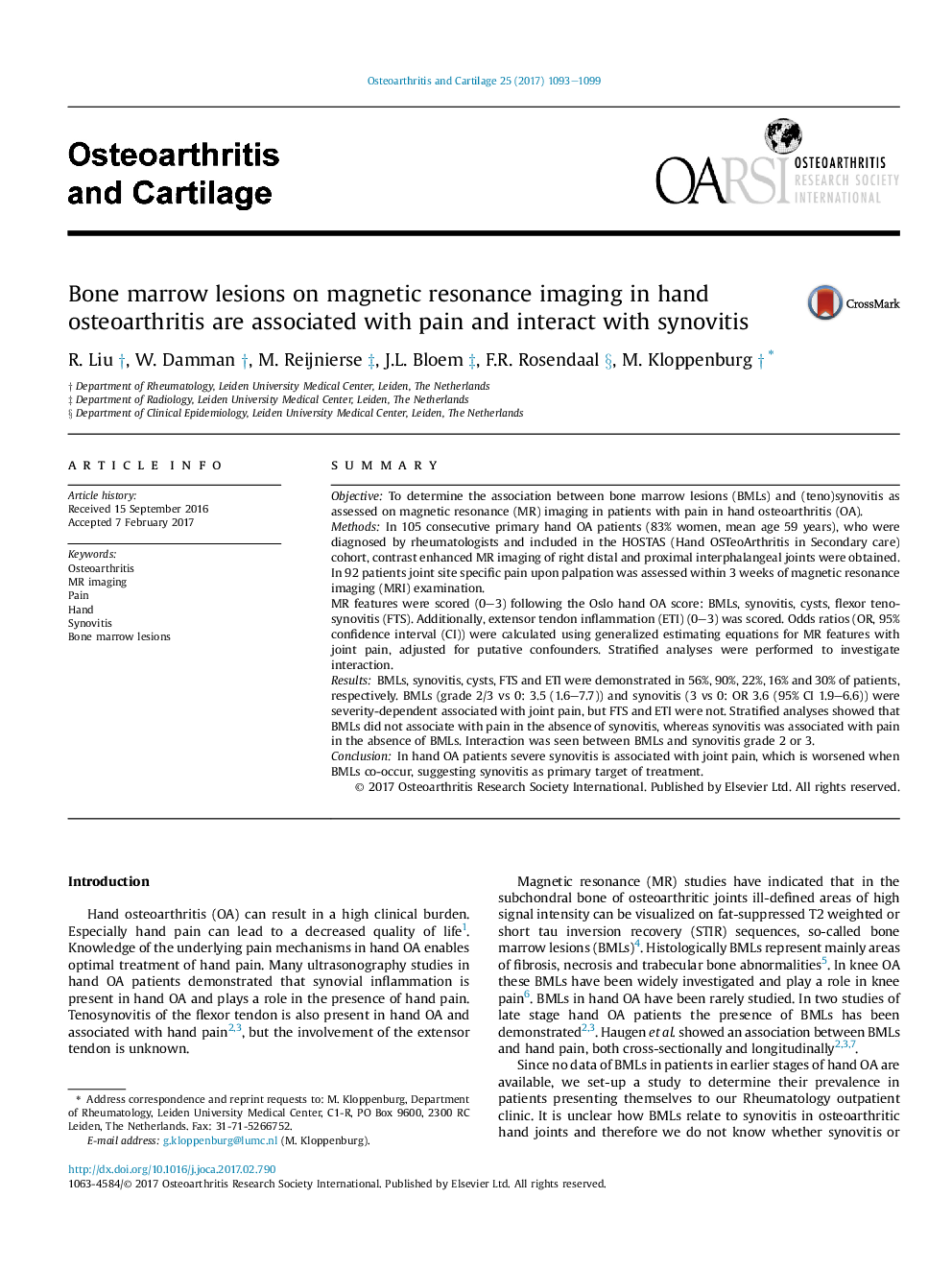| Article ID | Journal | Published Year | Pages | File Type |
|---|---|---|---|---|
| 5669310 | Osteoarthritis and Cartilage | 2017 | 7 Pages |
SummaryObjectiveTo determine the association between bone marrow lesions (BMLs) and (teno)synovitis as assessed on magnetic resonance (MR) imaging in patients with pain in hand osteoarthritis (OA).MethodsIn 105 consecutive primary hand OA patients (83% women, mean age 59 years), who were diagnosed by rheumatologists and included in the HOSTAS (Hand OSTeoArthritis in Secondary care) cohort, contrast enhanced MR imaging of right distal and proximal interphalangeal joints were obtained. In 92 patients joint site specific pain upon palpation was assessed within 3 weeks of magnetic resonance imaging (MRI) examination.MR features were scored (0-3) following the Oslo hand OA score: BMLs, synovitis, cysts, flexor tenosynovitis (FTS). Additionally, extensor tendon inflammation (ETI) (0-3) was scored. Odds ratios (OR, 95% confidence interval (CI)) were calculated using generalized estimating equations for MR features with joint pain, adjusted for putative confounders. Stratified analyses were performed to investigate interaction.ResultsBMLs, synovitis, cysts, FTS and ETI were demonstrated in 56%, 90%, 22%, 16% and 30% of patients, respectively. BMLs (grade 2/3 vs 0: 3.5 (1.6-7.7)) and synovitis (3 vs 0: OR 3.6 (95% CI 1.9-6.6)) were severity-dependent associated with joint pain, but FTS and ETI were not. Stratified analyses showed that BMLs did not associate with pain in the absence of synovitis, whereas synovitis was associated with pain in the absence of BMLs. Interaction was seen between BMLs and synovitis grade 2 or 3.ConclusionIn hand OA patients severe synovitis is associated with joint pain, which is worsened when BMLs co-occur, suggesting synovitis as primary target of treatment.
